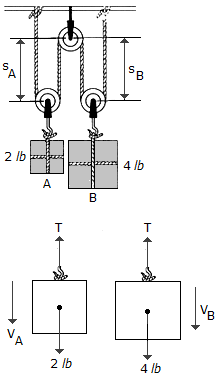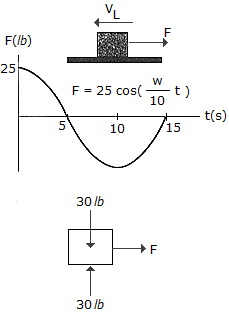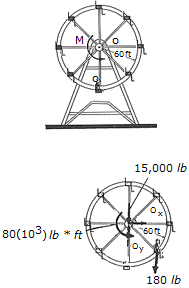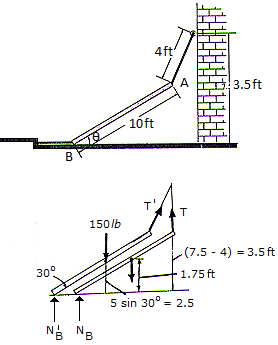 Introduction
Introduction
BITSAT 2020 – Entrance Examination, conducted in online Mode, has: a duration of 3 Hours and consists of 4 parts, namely – Physics, Chemistry, English Proficiency & Logical Reasoning and Mathematics/ Biology. The 4 sections are not separately timed and there is no break in between the sections. There is a Negative marking in BITSAT 2020 exam and 1 mark is deducted for each wrong answer. The below sections gives the detailed information about BITSAT Physics part.
 Pattern
Pattern
| Parts | Subject | No of Questions | Duration |
|---|---|---|---|
| Part I | Physics | 40 | 3 hours (Without break) |
| Part II | Chemistry | 40 | |
| Part III | (a) English Proficiency and | 15 | |
| (b) Logical Reasoing | 10 | ||
| Part IV | Mathematics or Bilogy (For B.Pharm candidates) | 45 | |
| Total | 150 | ||
Note:
There is no time limit for individual parts of the test. The candidate can go back and change any of his/her answers among the 150 questions.
If a candidate answers all the 150 questions (without skipping any question), the candidate will have an option of attempting 12 (twelve) extra questions, if there is still time left.
These extra questions will be from Physics, Chemistry, and Mathematics/ Biology only; four questions from each part. Further, once the candidate has opted for extra questions, he/ she cannot go back for correction of any of the earlier answered 150 questions.
The BITSAT Physics section, has 40 objective questions. Below mentioned are the different categories of expected questions in the BITSAT Physics Section.  Syllabus
Syllabus
BITSAT 2020 Exam Syllabus
Note:
Each correct answer fetches 3 marks, while each incorrect answer has a penalty of 1 mark (-1mark). No marks are awarded for questions not attempted. While the candidate can skip a question, the computer will not allow the candidate to choose more than one option as correct answer. There will be 150 questions in all.
 Samples
Samples
1. What is the unit for measuring the amplitude of a sound?
- A. Decibel
B. Coulomb
C. Hum
D. Cycles
- A. 6 feet
B. 6 meters
C. 60 feet
D. 100 cm
- A. Speed of aeroplanes
B. Speed of light
C. Stellar distances
D. Speed of rockets
- A. 0.84
B. 0.5
C. 1.6
D. 0.62
- A. Temperature
B. Heat
C. Atmospheric pressure
D. Current
1. The angular velocity (in rad/s) of a body rotating at N r.p.m. is
- A. π N/60
B. 2 π N/60
C. π N/120
D. π N/180
- A. tangential acceleration only
B. centripetal acceleration only
C. both tangential and centripetal acceleration
D. none of the mentioned
- A. tangential acceleration only
B. centripetal acceleration only
C. centripetal acceleration only
D. none of the mentioned
- A. plane motion
B. rectilinear motion
C. curvilinear Motion
D. none of the mentioned
- A. plane motion
B. rectilinear motion
C. curvilinear Motion
D. curvilinear Motion
1. What is the apparent weight of the person when the elevator is accelerating downwards?
- A. equal to the actual weight
B. greater than the actual weight
C. less than the actual weight
D. 0
- A. Collinear forces
B. Coplanar forces
C. Concurrent forces
D. Unit forces
- A. Decibel
B. Momentum
C. Hum
D. Cycles
- A. Gravitational
B. Electric
C. Magnetic
D. All of the Above
- A. Force
B. Momentum
C. Displacement
D. Inertia
1.
Determine the velocities of blocks A and B 2 s after they are released from rest. Neglect the mass of the pulleys and cables.
- A. [latex]{v}_{A}[/latex] = 21.5 ft/s 8, [latex]{V}_{B}[/latex] = 21.5 ft/s 9
B. [latex]{v}_{A}[/latex] = 64.4 ft/s 8,[latex]{V}_{B}[/latex] = 64.4 ft/s 9
C. [latex]{v}_{A}[/latex] = 64.4 ft/s 8,[latex]{V}_{B}[/latex] = 32.2 ft/s 9
D. [latex]{v}_{A}[/latex] = 21.5 ft/s 8,[latex]{V}_{B}[/latex] = 10.73 ft/s 9
- A. [latex]{v}_{wagon}[/latex] = 0.203 m/s
B. [latex]{v}_{wagon}[/latex] = 0.208 m/s
C. [latex]{v}_{wagon}[/latex] = 0.240 m/s
D. [latex]{v}_{wagon}[/latex] = 0.234 m/s
- A. [latex]{v}_{2}[/latex] = 91.4 ft/s 7
B. [latex]{v}_{2}[/latex] = 79.4 ft/s 6
C. [latex]{v}_{2}[/latex] = 91.4 ft/s 6
D. [latex]{v}_{2}[/latex] = 79.4 ft/s 7
- A. [latex]{v}_{man}[/latex] = 0.1776 m/s,[latex]{N}_{avg}[/latex] = 765 N
B. [latex]{v}_{man}[/latex] = 0.1979 m/s,[latex]{N}_{avg}[/latex] = 771 N
C. [latex]{v}_{man}[/latex] = 0.1776 m/s,[latex]{N}_{avg}[/latex] = 771 N
D. [latex]{v}_{man}[/latex] = 0.1979 m/s,[latex]{N}_{avg}[/latex] = 765 N
- A. [latex]{v}_{A2}[/latex] = 0.857 m/s,[latex]{v}_{B2}[/latex] = 4.86 m/s, x = 0.434 m
B. [latex]{v}_{A2}[/latex] = 0.600 m/s,[latex]{v}_{B2}[/latex] = 3.40 m/s, x = 0.304 m
C. [latex]{v}_{A2}[/latex] = 0,[latex]{v}_{B2}[/latex] = 4.00 m/s, x = 0.358 m
D. [latex]{v}_{A2}[/latex] = 0.327 m/s,[latex]{v}_{B2}[/latex] = 3.67 m/s, x = 0.329 m
1.
A man having a weight of 180 lb sits in a chair of the Ferris wheel, which has a weight of 15,000 lb and a radius of gyration of ko = 37 ft. If a torque of M = 80(103) lb • ft is applied about O, determine the angular velocity of the wheel after it has rotated 180°. Neglect the weight of the chairs and note that the man remains in an upright position as the wheel rotates. The wheel starts from rest in the position shown.
- A. ω = 0.888 rad/s
B. ω = 0.836 rad/s
C. ω = 0.874 rad/s
D. ω = 0.849 rad/s
- A. O = 42.0 N
B. O = 91.1 N
C. O = 122.6 N
D. O = 67.4 N
- A. ω = 10.00 rad/s
B. ω = 12.31 rad/s
C. ω = 17.41 rad/s
D. ω = 40.0 rad/s
- A. ω = 44.3 rad/s
B. ω = 39.6 rad/s
C. ω = 41.8 rad/s
D. ω = 59.1 rad/s
- A. [latex]{v}_{A}[/latex] = 5.87 ft/s
B. [latex]{v}_{A}[/latex] = 7.43 ft/s
C. [latex]{v}_{A}[/latex] = 10.18 ft/s
D. [latex]{v}_{A}[/latex] = 6.95 ft/s
1. Angular momentum is
- A. A scalar
B. A polar vector
C. A scalar as well as vector
D. An axial vector
- A. Upward to the radius
B. Towards the radius
C. Tangential
D. At right angle to angular velocity
- A. Increases in energy and increase in angular momentum
B. Decrease in friction at the skates
C. Constant angular momentum and increase in kinetic energy
D. Increase in energy an decreases in angular momentum
- A. Is zero
B. Goes on increasing as x is increased
C. Goes on decreasing as x is increased
D. Remains constant for all positions of the particle
- A. 40%
B. 20%
C. 10%
D. 21%
1. The period of artificial geostationary satellite is:
- A. 8 hours
B. 12 hours
C. 24 hours
D. 46 hours
- A. Increase by 2 %
B. Decrease by 2 %
C. Increase by 9.8 %
D. Remains unchanged
- A. The mass of satellite
B. Radius of the planet
C. Mass of the planet
D. Density of the planet
- A. 9.8 m/s2
B. 6.673×10-11 N m2 kg-2
C. 6.371 x 106 m
D. 1.738 x 10 6 m
- A. Gravitational force
B. Motion due to gravity
C. Acceleration due to gravity
D. Because of zero weight
1. Which one is in a state of failure?
- A. Solid
B. Liquid
C. Gas
D. Fluid
- A. Solid
B. Liquid
C. Fluid
D. Gaseous
- A. Solid
B. Liquid
C. Gas
D. Fluid
- A. High melting and boiling points
B. Low melting and boiling points
C. Weak inter-atomic forces
D. Weak inter-atomic forces
- A. In gaseous state
B. In solid state
C. When dissolved in water
D. They never conduct
1. The circular motion of a particle whose speed is constant is ________________.
- A. Periodic but not simple harmonic
B. Simple harmonic but not periodic
C. Periodic and simple harmonic
D. Neither periodic not simple harmonic
- A. Particle moving in a circle with uniform speed
B. Wave moving through a string fixed at both ends
C. Earth spinning about its axis
D. Ball bouncing between two vertical walls
- A. 4Hz
B. 3Hz
C. 2Hz
D. 1Hz
- A. [latex]\frac{T}{8}[/latex]
B. [latex]\frac{T}{13}[/latex]
C. [latex]\frac{T}{2}[/latex]
D. [latex]\frac{T}{4}[/latex]
- A. [latex]\frac{T}{6}[/latex]
B. [latex]\frac{T}{4}[/latex]
C. [latex]\frac{T}{3}[/latex]
D. [latex]\frac{T}{2}[/latex]
1. What type of waves are Sound Waves?
- A. Latitudinal waves
B. Longitudinal waves
C. Latitudinal mechanical waves
D. Longitudinal waves
- A. For measuring the depth of Sea.
B. In sterilizing of a liquid.
C. In Ultrasonography
D. In sterilizing a needle.
- A. Both (A) and (B) Only (B)
B. Only (D)
C. Both (C) and (D)
D. Only (B)
- A. 330 m/s
B. 332 m/s
C. 334 m/s
D. 336 m/s
- A. The speed of sound decreases with the increases of temperature of the medium.
B. The speed of sound decreases with the decrease of temperature of the medium.
C. The speed of sound increases with the decrease of temperature of the medium.
D. The speed of sound increases with the increase of temperature of the medium.
- A. Intensity
B. Echo
C. Pitch
D. Resonance
1. The energy required to increase the temperature of one pound of water one degree Fahrenheit is known as a Btu. For what does this abbreviation stand?
- A. Big Temperature Unit
B. Brenwald's Thermal Unit
C. Britain Temperature Unification
D. British Thermal Unit
- A. Anders Celsius
B. Galileo Galilei
C. Lord William Thomson Kelvin
D. Gabriel Fahrenheit
- A. 0 K
B. 459 K
C. 273 K
D. -273 K
- A. Conduction
B. Convection
C. Radiation
D. Transmission
- A. Enthalpy
B. Chaos
C. Entropy
D. Disequilibrium
1. Which of the following is not a good conductor of electricity?
- A. Copper
B. Silver
C. Glass
D. Aluminum
- A. sum of the magnitude of charges
B. product of the magnitude of charges
C. square of the distance between them
D. cube of the distance
- A. Magnitude of the charge enclosed by the surface.
B. Position of the charge enclosed by the surface
C. The shape of the surface
D. None of these
- A. Electric current
B. Electric field intensity
C. Electric potential
D. Electric flux
- A. V-m
B. N—C/m
C. V/m
D. N—C
1. What is the SI unit of electric charge?
- A. Volt
B. Coulomb
C. Ampere
D. ohm
- A. 9 * 109 Newton
B. 10 * 109 Newton
C. 9 * 108 Newton
D. 8 * 109 Newton
- A. 16 * 10-19 C
B. 1.60 * 10-19 C
C. 26 * 10-19 C
D. 1.8 * 10-19 C
- A. 6.25 * 1018 electrons
B. 3.25 * 1018 electrons
C. 2.25 * 1018 electrons
D. 4.25 * 1018 electrons
- A. Silver
B. Copper
C. Aluminium
D. All of the above
1. Who discovered the magnetic field of current?
- A. William Gilbert
B. Hans Christian Oersted
C. Benjamin Franklin
D. Charles Augustin de Coulomb
- A. Mechanical
B. Friction
C. Spring
D. Gravitational
- A. The presence of metal
B. Current flowing in it
C. Circular loop
D. No current in it
- A. Electric motor
B. Telephone
C. Radio
D. All of the above
- A. Bigger circles
B. Straight
C. Concentrated circles
D. Parallel straight
1. An E.M.F. can be induced by _________
- A. Change in the magnetic field only
B. Change in the area of cross section only
C. Change in angle between magnetic field and area only
D. Change in the magnetic field, area or angle between them
- A. Increases
B. Decreases
C. Remains constant
D. Reverses
- A. Current
B. Voltage
C. Electromagnetic induction
D. EMF
- A. Voltage
B. EMF
C. Magnetic flux
D. Magnetic flux density
- A. 0.3V
B. 0.03V
C. 30V
D. 3V
1. One reason why the sky appears blue is because:
- A. Much more red light than blue light is absorbed by air atoms.
B. Red light is reflected by the atmosphere.
C. Blue light is scattered to a greater extent than red light.
D. Higher energy light waves have more penetration through the atmosphere.
- A. aμ1 + b
B. a2bμ2
C. - μ1.
D. aμ1μ2
- A. E
B. E.B
C. E×B
D. B×E
- A. Propagation in media depends on re-radiation by electron-oscillators, which takes a finite time to occur.
B. Electron oscillators in the medium introduce a phase change upon re-radiation.
C. A medium is a different reference frame to vacuum, so the difference in the observed speed of light is a consequence of relativity.
D. Light is slowed down because it does not take a straight line path through the dense medium
- A. I only.
B. I and II.
C. II and III.
D. II only.
1. Rest mass energy of an electron is
- A. 1.02 MeV
B. 0.511KeV
C. 0.511 MeV
D. 2.02 MeV
- A. in which first law of motion is valid
B. in which law of inertia is valid
C. which is not moving with uniform velocity
D. both a and b
- A. visible light
B. ultraviolet
C. infrared light
D. x-rays
- A. depends on particles
B. speed of light
C. volume of object
D. area of object
- A. inertial frame of reference
B. non-inertial frame of reference
C. non-accelerated frame of reference
D. accelerated frame of reference
1. Two semiconductor material have exactly the same properties except that material A has a bandgap of 1.0 eV and material B has a bandgap energy of 1.2 eV. The ratio of intrinsic concentration of material A to that of material B is
- A. 2016
B. 47.5
C. 58.23
D. 1048
- A. 150V
B. 100V
C. 300V
D. 400V
- A. 1.9 eV
B. 1.3 eV
C. 2.6 eV
D. 0.64 eV
- A. 26.8
B. 18.4
C. 8.5
D. 3.6
- A. 300 K
B. 360 K
C. 382 K
D. 364 K














